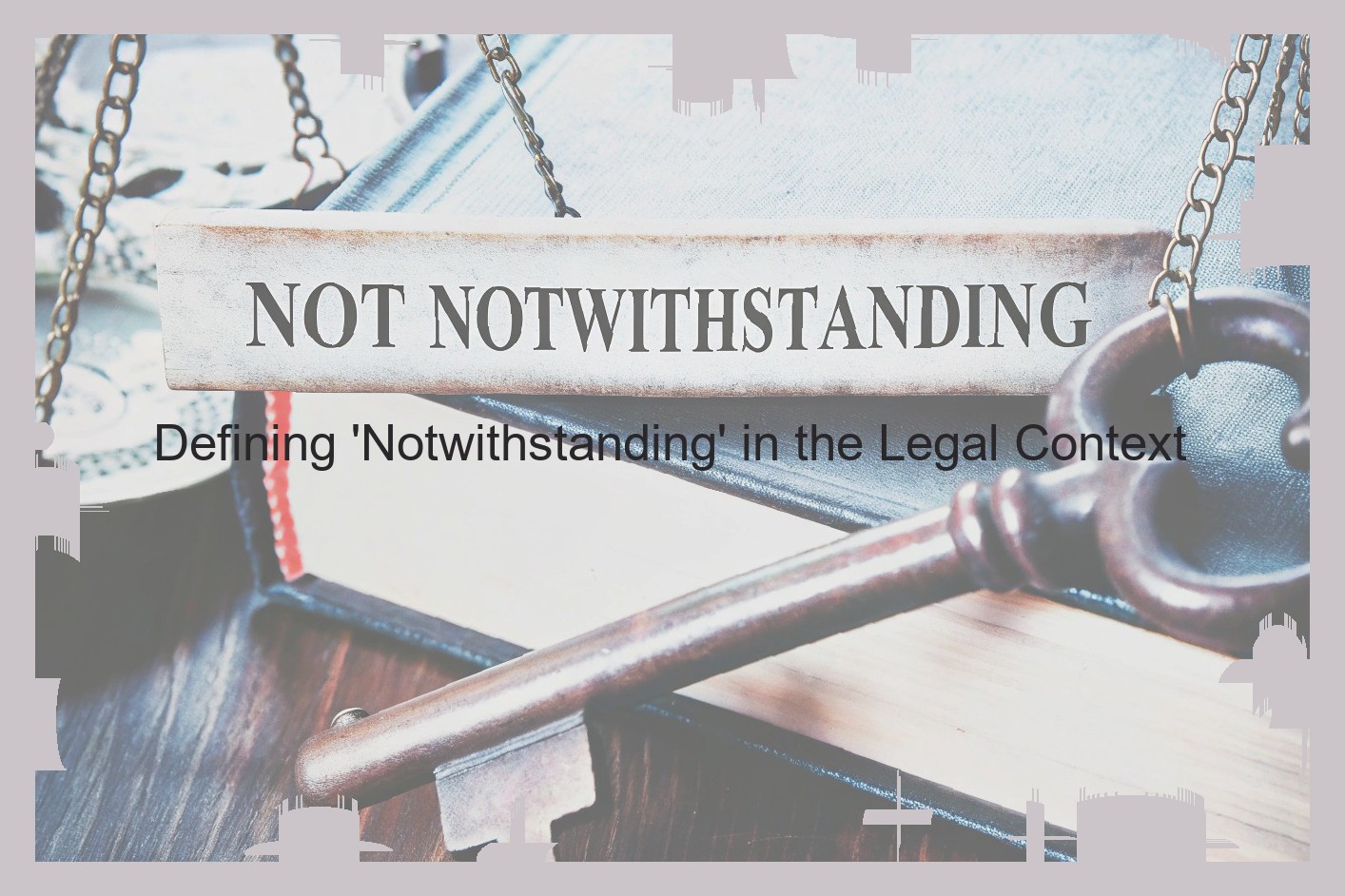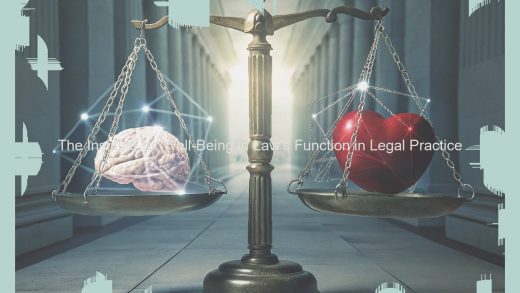Interpreting the Term ‘Notwithstanding’ in Legal Writing
Notwithstanding is a legal term of art meaning "without regard to or notwithstanding something (as a fact)" or "despite; in spite of." It is derived from the Old French notover (德法) and is often used in legal documents or contractual language. In a contract, notwithstanding allows parties to create exceptions to the other provisions of the contract. For example, "notwithstanding anything in this agreement to the contrary," party A "shall be liable for any damages." Here, notwithstanding creates an exception to the rule that the other terms and conditions are binding. Meaning notwithstanding should be interpreted as to modify the rules of the contract, which can also arise from statutes or regulations. The term notwithstanding is a "boilerplate" term meaning it is commonly used as part of a larger section on interpretation .
Notwithstanding is also used in positive and negative legislation to allow exceptions to the remainder of the statutory scheme, although different from a contract, the authority to create an exception must be given by a legislature. For example, "Notwithstanding the notwithstanding (the first notwithstanding) …."
Black’s Law Dictionary defines notwithstanding as "In spite of; without prevention or obstruction by; not confining, restraining, or allowing; despite; although. Notwithstanding is frequently followed by a phrase beginning with a participle or gerund, so that it appears to serve as a preposition, a conjunction, or an ablative. At least one early court noted that construing notwithstanding as a place either before or after the rest of the sentence meant that the notwithstanding phrase would have no real meaning.

The Function of ‘Notwithstanding’ in Legal Texts
The word notwithstanding is a powerful tool in legal drafting. When used properly, notwithstanding modifies any other language that might conflict with the use of notwithstanding. For example, "[Notwithstanding anything to the contrary, Section 4(d) shall not apply to this Section 13(b)]," means notwithstanding anything to the contrary, Section 4(d) will not apply to Section 13(b). In other words, Section 4(d) will only apply to Section 13(b) if the covenant in Section 4(d) does not apply.
Consider a simple modification and how the use of notwithstanding changes the meaning of that modification: "[Notwithstanding anything in Section 9.1.5(a)], . . . the restricted period shall expire on the fifth anniversary of the date of this Agreement."
That modification means that the expiration of the restricted period is modified by the date of the Agreement notwithstanding anything to the contrary in Section 9.1.5(a). So even though Section 9.1.5(a) may require a longer restricted period, the modification will cut off that restriction on the fifth anniversary of the date of the Agreement.
Suppose instead that the plain meaning of Section 9.1.5(a) was to terminate the restrictions upon the fifth anniversary of the Agreement, and that the parties wanted to modify Section 9.1.5(a) to require a ten-year period instead. In that case, the right drafting for the modification would look like this: "[Notwithstanding anything in Section 9.1.5(a)], . . . the restricted period shall expire on the eighth anniversary of the date of this Agreement."
In that modification, the eight year anniversary of the Agreement is the ultimate date for release from the restrictions in the Agreement, which is what the parties intended.
Now, consider how the modification would change if it were drafted as follows: "[Notwithstanding anything in Section 9.1.5(a)], . . . the restricted period shall expire on the fifth anniversary of the date of this Agreement."
In that modification, notwithstanding anything to the contrary, the expiration of the restricted period would end upon the fifth anniversary of the Agreement. Section 9.1.5(a) would still apply to Section 13(b), unless Section 9.1.5(a) states that the restricted period will end on the eighth anniversary date of the Agreement. Only then would the parties’ modification prevail over Section 9.1.5(a).
As is apparent from the examples above, the placement of notwithstanding is important. It must come at the end of the provisions as opposed to in the beginning or in the middle of the provisions. In the examples above, if notwithstanding appeared at the beginning or in the middle of the modification, it would not modify later language. Instead, if placed as a modifier at the beginning or in the middle, despite anything to the contrary, it would only be modifying the preceding and following words.
The placement of notwithstanding in a modification, therefore, is as important as the placement of the modification itself.
Common Misunderstandings Surrounding ‘Notwithstanding’
Beyond its use in contracts, "notwithstanding" has several other interpretations that can confuse those who are trying to figure out its meaning in a legal context. For example, some jurisdictions allow "notwithstanding" to mean "despite." Others have said that "notwithstanding" means regardless of any other law that is to the contrary. And in yet other states, courts have simply held that "notwithstanding" is meaningless.
Because the "notwithstanding" is so commonly used in legal documents, courts often disregard its common definition.
The Maryland Court of Special Appeals once explained that "notwithstanding" means "in spite of," and so the words it modifies "should be given their ordinary meaning, and in the case of a contract [it] should be read as having the same effect as the word even though it does not actually appear in a similar context."
So courts do not always interpret "notwithstanding" as synonymous with "despite" or "regardless." This is why the word can be so confusing and lead to misinterpretations. So how is it better to understand it? The key, ironically, is context.
The most reliable way to ascertain what "notwithstanding" means is to look at the words that it precedes in the sentence. From the context of its use, you should be able to deduce its meaning. The fact remains that "notwithstanding" generally refers to exclusion—that it supersedes a general rule, even if that general rule is otherwise well-known.
One of the most notorious instances of "notwithstanding" being misinterpreted comes from the 1993 California Supreme Court case that eventually reached the U.S. Supreme Court. In case you haven’t already guessed, it’s the case that dealt with whether the workers’ compensation exemption was a valid police power exemption, and the case that established the "police power exemption rule."
The law in question in the case said that there was a tax that could have been charged on the sale of the property, but it says that "notwithstanding any other law the sale," etc. That law was interpreted as saying that businesses who were not eligible for the tax would not be required to pay it, creating what is known as the "police power exemption" to ad valorem taxes on property.
The California Supreme Court simply acknowledged that the use of "notwithstanding" and "regardless of any other law of this state" meant that the law did not apply to the police power exemption. The Court said that "the word "notwithstanding" might have the following meanings: in spite of; notwithstanding, notwithstanding any other provision in the Act, and without reference to, regardless of any other provision in the Act."
The Court then said that in other circumstances, they found that the phrase was an expression of legislative intent, that it meant notwithstanding any other law to the contrary, and for our hypothetical legal sense, "notwithstanding" could be interpreted as "in spite of."
Illustrating ‘Notwithstanding’ with Legal Cases
The phrase "notwithstanding" can be commonly found in legal texts, and this is a cause of confusion for both legal professionals and individuals who are not in the legal business. Confusion about the meaning of "notwithstanding" is especially common in relation to exemptions from disclosure under the Freedom of Information Act 2000, where the exemption may not be a full exemption and there may be a public interest balance that needs to be assessed. In Ex parte the Guardian Newspaper Ltd [1983] 2 All ER MINISTER OF STATE FOR DEFENCE v. APIU & ORS the term "notwithstanding" was described as a "powerful, yet ambiguous, word". The term "notwithstanding" is derived from the Latin "notstante" which translates to "despite" or "in spite of". The term itself is derived from French where it means "nevertheless". Unless a specific meaning is otherwise ascribed, "notwithstanding" means "without prevention by" and is used in order to prevent something that would otherwise occur. It basically means "in spite of".
In Ex parte Norwegian Bulk Transport (Cameron) Ltd (Riot Comm’r), THE TIMES, March 6, 1990 Court of Appeal (England and Wales) the Court of Appeal had to consider the impact of "notwithstanding". In this case the Police were permitted to disclose to third parties advising them that the police had identified them as a threat to the police operation being mounted. The judge found that the power to "disclose notwithstanding the provisions of any other enactment" was remarkably widely framed. Lord Justice Beldam, whilst accepting that it might be arguable that the power to disclose could not be exercised notwithstanding section 60 of the Data Protection Act 1998, nonetheless found that the "notwithstanding" wording was appropriate and avoided the restriction that might have otherwise been imposed . Lord Justice Dillon further commented that "Parliament must be taken to be aware of the ordinary meaning of the word "notwithstanding" as used in a statute and to intend it to be given that meaning unless some contrary intention can be derived from the context or purpose of the statute.
In Ex parte Nigerian National Petroleum Corporation [2000] 1 FLR 98 Under section 27 of the Freedom of Information Act 2000 the Commissioner is required to consider exemptions for various exemptions for exemptions against a backdrop of the public interest. The issue considered by the Tribunal in this case was whether or not ‘notwithstanding’ the provisions of section 27 a public authority was obliged to disclose certain information. The Commissioner considered it to be in the public interest that the information be disclosed and the public authority argued that the information should remain confidential. In summary the First Tier Tribunal held that the power to disclose notwithstanding the provisions of the personal data provisions was not a positive power to disclose personal data; but was a power to disclose, not a duty to disclose. It also held that Parliament deliberately kept the disclosures provisions subordinate to the Data Protection Act and other laws, and the additional hurdle of a public interest test made it even less likely that Parliament intended the otherwise absolute disclosure provisions to prevail.
The application of the words "notwithstanding" and the like does not appear to have been interpreted to the extent that it could have been in the courts in this context. The cases where "notwithstanding" is considered are in the context of disclosure or confidential information.
Incorporating ‘Notwithstanding’ in Legal Drafting
The Black’s Law Dictionary definition of "notwithstanding" states that "Notwithstanding" is "[i]n spite of; notwithstanding the fact that; although; even though." In the drafting context, however, that definition doesn’t capture the utility of "notwithstanding."
As I’ve mentioned before, the word "notwithstanding" is a drafting word that serves to provide clarity and to indicate a hierarchy of interpretation. The best practices for using "notwithstanding" in a legal document, therefore, are to use it (a) consistently and (b) in conjunction with a clear hierarchy of rules for interpretation of the terms of the document.
For example, let’s say you are drafting a confidentiality agreement and you’ve got a provision that says confidential information doesn’t include information that becomes public knowledge. Readers might be confused as to whether "public knowledge" means "generally known or otherwise made generally known to the public through no wrongful act or omission of the receiving party" (which is the most common definition of "public knowledge"), or whether it encompasses only a narrowly tailored meaning of "public knowledge" that the parties have agreed to. It would be wise to clarify in the definition of confidential information that "notwithstanding anything to the contrary," the definition of confidential information does not include information that becomes generally known or otherwise made generally known to the public through no wrongful act or omission of the receiving party. That would clearly show the parties’ intention that the public knowledge exception to confidential information, therefore, not be limited in any way.
Clarity matters in the world of contracts, and "notwithstanding" is an important tool for achieving that clarity.
Conclusion: The Significance of ‘Notwithstanding’ in Legal Writing
For lawyers involved in the practice, it is essential to come across "notwithstanding" to understand its definition. Its ability to convey a broad range of meanings is integral to legal documents, and it is vital for those called to interpret these documents to have the proper resources to do so effectively.
The role of "notwithstanding" is particularly significant in the case of contracts. In the construction of contracts, as the above examples demonstrate, the phrase can be very useful in clarifying the intentions of the parties removing future ambiguity in their application. Importantly, what "notwithstanding" is establishing or clarifying in any given text is the intention of the person or organization supplying the document. As such, this should come as a relief to those tasked with interpretation of a legal text. As a general rule, the intention of the author of any legal document will be focused on the text itself . The intention of the author or authors is likely to be found circulated around the four corners of the document itself, or, in some cases, the documents that interchange between the parties to the relevant contract.
The essence of good drafting is to avoid any possible misunderstanding or misinterpretation of intention. Good legal draftsmanship is not concerned with reducing the length of a document if the content of that document is unnecessarily diluted or complex as a result. Rather, good draftsmanship will seek to produce lengthy, thorough documents that are not subject to misinterpretation or multiple interpretations. In this regard, the effective use of "notwithstanding" can help to mitigate these issues, and is therefore a key component of legal texts.
Although the language of "notwithstanding" is one primarily reserved for the legal world, there is no doubt that its wide-ranging applications make it an undeniable part of a lawyer’s vocabulary. Knowing how and when to apply the word is essential to the production of effective legal documentation.



